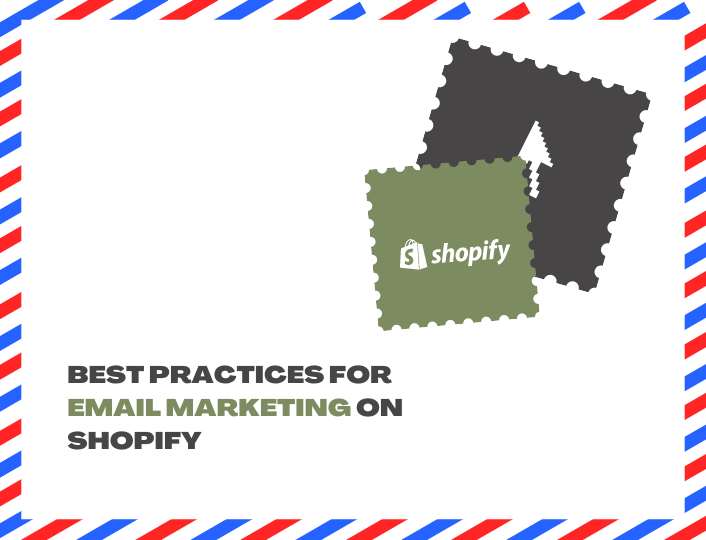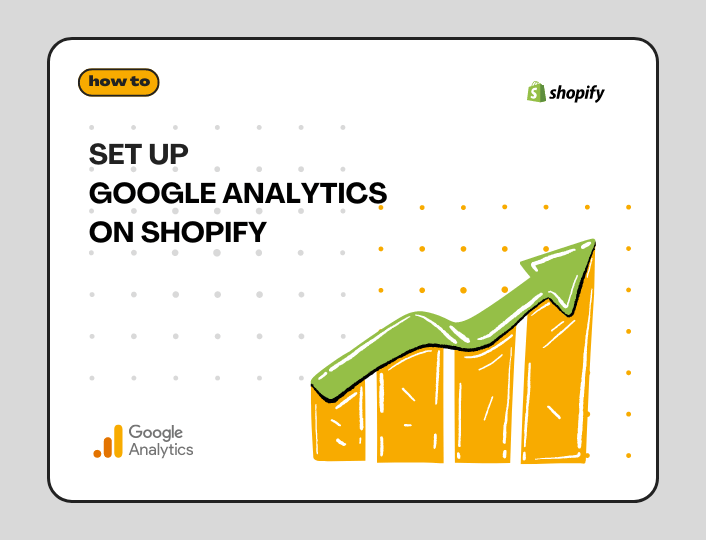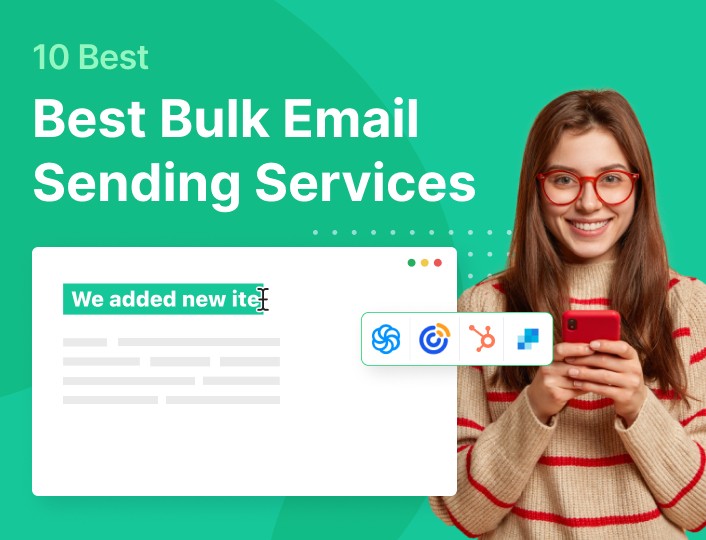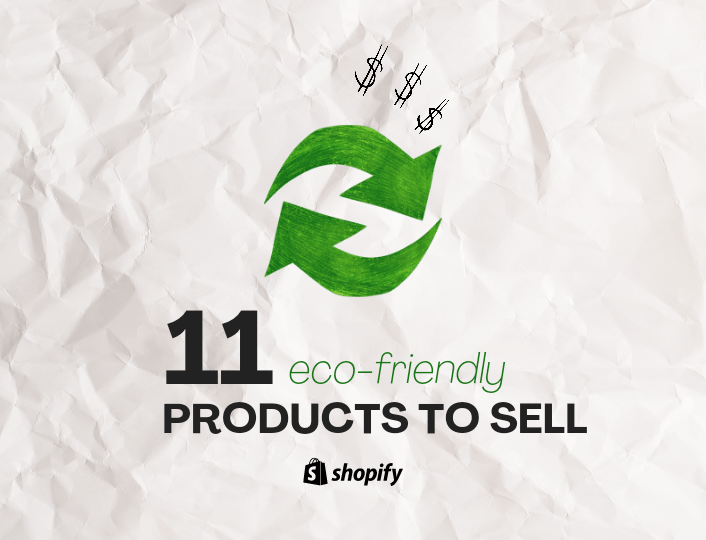Email marketing is still the most converting channel for businesses, particularly B2B. Per Statista, 347 billion emails are exchanged daily globally; this number is projected to climb as we near the end of the decade.
There’s a right approach to sending Shopify marketing emails. This approach ensured that, in 2023, eight in ten marketers saw an increase in email engagement over 12 months.
Shopify sellers struggle with converting their emails because they miss the tiny details – like crafting actionable CTAs or segmenting their email lists. In this article, we’d look at the best practices for Shopify email marketing. They include:
- Send a Welcome Email
- Segment Your Emails
- Use an Email Marketing Tool
- Write Clear CTAs
- Write Compelling Subjects
- Use Double Opt-ins
- Offer Incentives
- Avoid Using a No-reply Email Address
- Personalize Your Emails
- Utilize In-store Popups
- Set a Frequency
- Maximize Preview Texts
- A/B Test Your Copies
- Simplify Unsubscribing
Best Shopify Email Marketing Practices
59% of buyers admit that emails have previously impacted their purchase decision. Hubspot and GetResponse, two global leading (email) marketing platforms, compiled email marketing stats across several industries. These stats favor the practices below as some of the best practices to adopt:
Send a Welcome Email
The open rates on welcome emails range between 82% and 84%. Welcome emails get a good response – the best rates of all email types, in fact – because they often mark the recipient’s first official interaction with your business.
To make your welcome emails resonate:
Highlight Uniqueness
A customer receiving a welcome email likely already knows your business name and what you do, so you don’t need to reintroduce yourself, right? Wrong.
Create an impression by stating what you do and how you do it differently from others. Here’s an example where MonsterInsights highlight that they provide “the stats that matter”. That’s a defining statement.
Provide Resources
Ease your customer into your brand by supplying a library of resources that help them find their way around your product. Since customers are more likely to open your welcome email, adding resources implies that you care about their experience, and is more likely to convert.
Below, Search Engine Journal links to their ebooks, blog posts, and podcasts. Doing this is a statement of value and persuades recipients to view your brand or business as a thought leader.
Send a link to your top-performing articles if you run a blog. Have a YouTube channel? Link them to the site. Got a free e-book or any other lead magnet? Ask them to download and enjoy.
Offer a Coupon
Got a coupon or discount for first-time buyers? Ship this to them via email. Discounts excite customers, and receiving a discount on first purchase – or visit – is the best step to nudging customers towards another purchase.
Segment Your Emails
Per Hubspot, email segmentation is the second most effective strategy for a converting Shopify email marketing campaign. Email segmentation allows you to send targeted, relevant emails, leading to higher engagement and conversion rates. The more aligned the content is with the recipient’s interests or behaviors, the better the results.
To segment your email subscribers on Shopify:
- Go to “Customers” in your Shopify admin.
- Click “Create Segment.”
- Choose criteria like purchase history, location, or behaviors.
- Save the segment and use it in your email campaigns.
For effective customer segmentation:
- By Demographics: Group customers by location, gender, or occupation.
- By Age: Tailor content to different age groups.
- By Engagement Rate: Target active or inactive subscribers differently.
- By Purchase History: Offer personalized recommendations or discounts based on past purchases.
Use an Email Marketing Tool
You can draw up an effective Shopify email marketing strategy, but the tool with which you execute your plans will influence your results. And, if one email marketing tool doesn’t capture all you need, you can diversify to other tools.
For instance, Adoric’s tailored opt-in forms offer high conversion rates for welcome emails. You can set up a popup that trades a coupon for a visitor’s email, or offer a discount for prospects willing to share their email addresses.
When choosing your email marketing tools, watch for:
Automation
Your tool should have automation turned on. For example, ensuring that you can send welcome emails when a new subscriber joins your list, as Adoric does. You should also be able to set up workflows that trigger emails based on customer actions, as in the example below with ActiveCampaign.
Audience Segmentation
Can you segment your audience by the demographics shared earlier? For example, can you send special offers to customers who haven’t made a purchase in the last 60 days? Most email tools with automated workflows also support audience segmentation, as this increases relevance and engagement.
Email Scheduling
Check that the software lets you plan and schedule emails for specific dates and times, such as sending a holiday promotion a week before the event. Check that they provide holiday email templates that lets you save time on creating an offer.
A/B Testing
Before shipping out an email, Adoric lets you A/B to see how you can optimize your emails for higher open and conversion rates. The email tools you add to your Shopify store should have A/B testing options.
Use Clear CTAs
We often assume that most people know what to do with written content? We don’t always, and emails aren’t excluded. Call-to-actions (CTAs) spell out the exact action you want your customers to take. CTAs influence an email’s click-to-open-rate, which is the primary factor for measuring an email campaign’s effectiveness.
For stellar CTAs:
Use Action Words
When designing your CTA button, switch from passive to active statements. This puts your reader in the “driver’s seat” and lets them know what to do. Ditch familiar phrases – like “learn more” – for specific action words like “Discover the best deals”.
Keep it Concise
The best CTAs nail the point in a few words. For example, “Buy Now” or “Claim Your Discount.” Concise CTAs are easier to understand and act upon, reducing customer’s hesitation. Below, “follow us” builds on the sender’s desire to have the customer join them on Twitter. Nothing vague, nothing extra.
Imbue Urgency
Tap into your customer’s dormant FOMO by sprinkling your CTAs with words that denote urgency. Instead of writing “Start Shopping”, say “Limited Time Offer – Act Now!” Creating urgency prompts users to take action quickly, avoiding procrastination.
Create a Visual Image
Combine text with buttons or icons, like a shopping cart or arrow. Use vivid verbs Visual elements draw attention and make the CTA more clickable, enhancing user interaction.
Write Compelling Subject Lines
Subject lines impact an email’s performance just like CTAs do. A well-crafted subject line sets the stage for your customer’s experience.
Chris Fenning, IT and Communications expert, says, “A good subject line includes a clear statement of what the email is about. Whoever receives your email will understand it and can evaluate whether they should open and read the message, and you’ve effectively reduced the chances that your message won’t be opened.”
For good subject lines:
Don’t Personalize
There’s a place to personalize your email content – it’s not the subject line. Emails with personalized subject lines are less opened and less read. Keep the personalization for the body of the email.
Avoid Spammy Words
Words like “Free,” “Urgent,” or “Buy Now” can trigger spam filters, reducing your email’s reach. Some email tools, ActiveCampaign for instance, flag subject lines that start with a number, as this is a common tactic with spam emails. You don’t have to sweat this out. A good email tool has this covered.
Use Action Words
As with CTAs, so is it with subject lines. Moderate your usage of action words by alternating between high-intense words and low-intense alternatives. For instance, you can send an email with an urgent subject line (as seen below), then send a subsequent one with a neutral subject line.
Use Double Opt-ins.
A double opt-in requires a user to confirm their subscription through a follow-up email, ensuring that only those genuinely interested in your content are added to your list. This not only helps you build a more engaged audience but also protects against spam complaints and reduces the chances of your emails being marked as spam.
Additionally, double opt-ins help ensure compliance with various data protection regulations, such as GDPR.
Before selecting an email tool, ensure that it offers the option for double opt-ins. For instance, Shopify Email allows sellers to enable this feature, giving them control over their list quality.
Offer Incentives
Rewards and coupons are great customer retention tools that ensure continuous conversions and increased sales. Integrate incentives into your Shopify email marketing strategy, beginning with your welcome emails.
Promote Incentives Early
If you’re running a promo or discount, don’t wait until six hours to expiration before mentioning it in your emails. Notify your customers as soon as the offer is up. Then send incremental emails towards the deadline so they don’t miss out on the opportunity.
Use A Countdown Timer
A countdown timer imprints a visual impression in your customers’ minds, which increases their odds of taking action.
Set an Expiration Date
Sometimes, defining the date an offer closes works in place of a countdown timer. Setting expiration dates for special offers also helps your customers effectively plan towards maximizing the offer before it closes.
Avoid Using a No-Reply Email
Ever tried replying to an email only to find out it was “unreplyable”? Businesses sometimes unknowingly use no-reply email addresses, which can hinder customer communication. No-reply emails are best suited for transactional messages, such as password confirmations or shipping details.
Want your Shopify sellers to write back? Use personal emails, like [email protected], for regular email tasks. This encourages engagement and builds trust, allowing customers to reach out if needed.
Personalize Your Emails
While research discourages subject-line personalization, studies also show that personalization in the body of your email converts more than non-personalized content (see screenshot below)
Effective personalization tips include:
Name Inclusion
Including the customer’s name is a simple yet powerful way to make the email feel more personal and relevant.
Most senders keep the first name to the opening line alone. Go one step further by personalizing different sections of the body. This presents a feel of a one-on-one conversation with your customers.
Offer Product-related Resources
After a store purchase, send helpful resources related to the item, like a how-to guide or tips to maximize its use. For example, if a customer buys a camera, link a guide on photography basics into a follow-up email. This shows your expertise within your niche, and shows your customers that you care about their experience beyond the profits.
Revive Abandoned Carts
Personalized emails reminding customers of items left in their cart can prompt them to complete their purchase. Include the specific items and offer assistance or incentives to encourage the sale.
Utilize Popups
Shopify popups show an average click-through-rate of 8.5%, which is at least twice the average open rates for most emails. With Adoric, you can set up converting email popups with only a few clicks.
If, for example, your objective for a month is to grow your email community, using a “welcome newsletter popup” would serve you right. However, if you’d like to both grow your email list and boost conversions by offering discounts, creating an email popup with coupons is a better fit.
Once here, customize your email campaign from the ready-made templates. We’ve pooled the templates into our design “Wizard” by sampling hundreds of Shopify email popups and A/B testing several options to test conversions.
Stick with a Schedule
Sending emails on a consistent schedule helps build anticipation, as customers come to expect your communications at specific times. To achieve this, you can prepare content in advance to reduce last-minute stress. This also ensures quality across all your email campaigns.
Most email marketing tools also allow you to schedule email batches, even during busy sales periods. That way, you can set up an email during free hours, A/B test them, and schedule them to go out at the right time.
Lastly, experiment with different times to identify when your audience is most responsive, then stick to what works.
Maximize Preview Texts
Preview texts, often overlooked, are crucial for engaging readers. They offer a sneak peek of your email’s content and can entice readers to open it.
Here, SEMRush delivers a brilliant preview text by expounding on the subject line in the copy. While the subject line emphasizes the results, the preview text shows exactly how they think readers can achieve the result.
Note that both the subject line and preview texts begin with visual, active words, which further compels the reader to dig into the email.
A/B Test Your Copies
A/B testing can significantly boost engagement and conversions. When A/B testing, start with the minor elements. Test variations in subject lines, headers, or CTAs first to see what resonates.
If you receive customer feedback, pay attention to the responses and adjust your strategy accordingly. Monitor which versions of your email campaigns perform better to refine future emails.
Don’t pull off drastic changes that may affect your brand perception or reception. Introduce changes slowly.
Simplify Unsubscribing
It’s okay to not want to see customers drop off your email list. However, making it easy for uninterested customers to unsubscribe will help you maintain a healthy email list. Unsubscribing should be a straightforward process, as keeping disengaged users only harms your email metrics over time.
Avoid the following:
Obscure Unsubscribe Buttons
Just as users don’t need to consult a map to get on your email list, they don’t need one to leave. Place your unsubscribe buttons where users can conveniently click them. This should ideally be at the bottom of your emails, but you can experiment with different visible positions.
Requiring Users to Send a Message
Forcing users to email you or contact support to unsubscribe creates frustration and reflects poorly on your brand. Automate the process so users can leave without waiting on customer support.
Complicating the Process
Don’t make unsubscribing a multi-step ordeal. The process should be quick and easy, ideally completed with a single click or through a simple confirmation page. Don’t be like the folks at Science Careers who created an entire, overwhelming list of email preferences to consider when attempting to unsubscribe.
Creating an Email Marketing Campaign With Adoric
Adoric offers three distinct email campaign types to explore for your Shopify email marketing. As discussed earlier (see Utilize Popups), you can preview at least five different email templates per campaign type.
To get started
Customize a Template
Once here, customize your campaign from the ready-made templates. After choosing a template, edit the template to make it gel with your store’s branding. We’ve grouped the edit options for easy navigation.
You can shuffle template design types, change the style, rewrite the text for your popup, or add a new background image.
For effective customization:
- Use an original image.
- Make the header clearly visible.
- Change the colors to match with your store’s custom colors.
- Use a contrasting color for the call to action button.
Set Triggers
Before publishing an email popup, you can set the trigger to capture your audience at the right time. For example, with an exit intent popup, the trigger should be set to appear on exit intent.
To edit a trigger, click the banner at the bottom of the page.
We set the customer triggers based on analysis of 100+ Shopify popups across multiple stores. For example, the timing for this sample popup says “after 5 seconds”. This means that the popup will only appear once a customer has been on your page for five seconds. Each popup will also only appear once per browsing session.
Click the “pencil” icon to make changes.
You’ll be prompted to continue in the editor. If you’d prefer to work with the in-built triggers, select “Stay in Wizard”.
Once you’re done editing the trigger, it’s time to publish your popup. But before that…
Preview Your Campaign
Ever hit send on a tweet or an email before spotting a typo? Happens to everyone! To avoid snaggy mistakes like typos or wrongly-placed background images, preview your campaign before it goes live.
Hit the “eye” icon at the top right of your dashboard. This will prompt a unique preview link. Copy the link and paste it into a new tab to see how your popup looks.
Note changes, if any, and make adjustments in your dashboard. Once you do, you can then publish your email popup to your Shopify store.
Why Shopify Email Marketing Matters
Email marketing on Shopify offers numerous benefits including:
Huge ROI
Email marketing boasts one of the highest return on investment (ROI) rates among digital marketing channels. Litmus reports that for every $1 spent on email marketing, the average ROI is $36. This impressive return can be attributed to the cost-effectiveness and high engagement rates of email marketing.
Personalization
Personalization is a key driver of success in email marketing. Most emails are tailored to individual preferences and behaviors, which significantly enhances customer experience and increases engagement.
Provides Valuable Customer Data
Email marketing supplies valuable information that can be used to track user’s shopping patterns. Most tools provide data for click-through rates, open rates, and click-to-open rates. With this data, you can properly segment and strategize your marketing efforts towards precise conversions.
Serves Multiple Sales Stages
A Shopify store might use an automated email sequence to follow up with new customers, offering them a series of welcome emails, product recommendations, and feedback surveys.
These email categories fit into the different stages of a sales funnel, from awareness to post-purchase.
Types of Shopify Marketing Emails
Once you send out a welcome email, what happens next? Are there other types of Shopify emails for your customers? Certainly. Below are some email types to diversify your content collection.
Welcome Emails
Welcome emails are designed to greet new subscribers and create a positive first impression. They are typically the first point of contact after a customer signs up for your email list or creates an account on your Shopify store.
Additionally, welcome emails encourage subscribers to explore your store, browse products, or follow you on social media. They’re more effective at engaging subscribers compared to standard promotional emails.
Promotion Emails
These emails are crafted to drive sales by highlighting special offers, discounts, or limited-time deals. They clearly state the details of the promotion, whether it’s a percentage off, a buy-one-get-one-free offer, or a seasonal sale.
To create a sense of urgency, these emails often use phrases like “Hurry, offer ends in 24 hours!” and include eye-catching visuals to showcase the promotion. Promotional emails are highly effective at driving sales, with 60% of consumers reporting that they have made a purchase as a result of receiving such an email.
Post-purchase Emails
Post-purchase emails go out once a customer completes a transaction. These emails provide details about the purchase, such as items bought, shipping information, and estimated delivery date.
Here’s where to plug in additional resources, information on warranty, return policy details, product care tips, or usage guides. Here’s also where to recommend products that complement the just-purchased item.
Educational Emails
Educational emails focus on providing value to subscribers by sharing knowledge, tips, or insights related to your products or industry. These emails are designed to establish your brand as an authority and build trust with your audience. They offer informative content, such as how-to guides, tutorials, or expert advice, without being overly promotional.
Each email type serves a purpose and contributes to a customer’s sales journey, whether on Shopify or not.
Expert Summary
“With Shopify email marketing, the gem is in the details, the tiny adjustments. Though most Shopify sellers brush this aside as it doesn’t seem to be a core aspect of running a Shopify store, the practiced discussed in this piece have confirmed that email marketing is a huge revenue source for Shopify sellers. Absolutely encourage Shopify sellers to give some of these a shot.” – Tal Revivo, CEO, Adoric.
Conclusion
The email marketing industry will expand in the coming years. Once you can nail your strategy, you can set up systems that automate your email marketing processes and guarantee your business a well-oiled revenue channel.
Start by revising your CTAs. Start by offering incentives to first-time and long-term customers. Create welcome email popups that build your email list. Start your Shopify email marketing with Adoric, and join 5000+ Shopify sellers already doing this.
Click the button below to get started.





